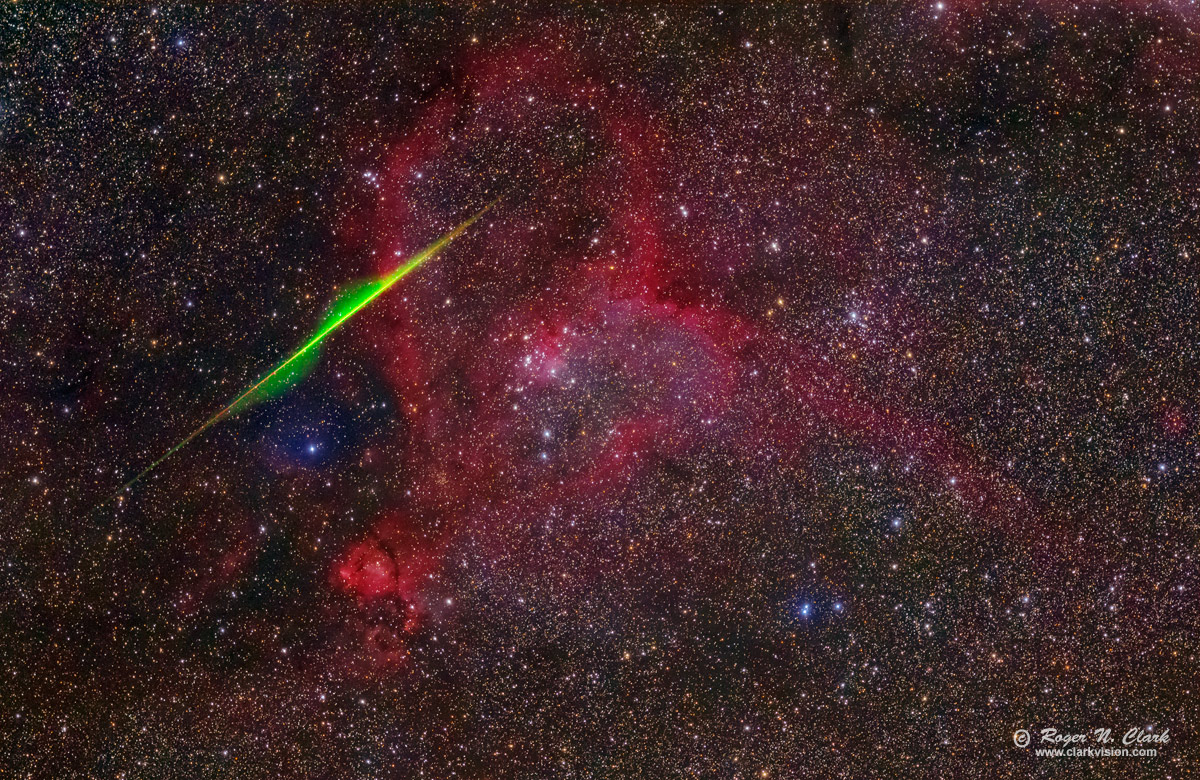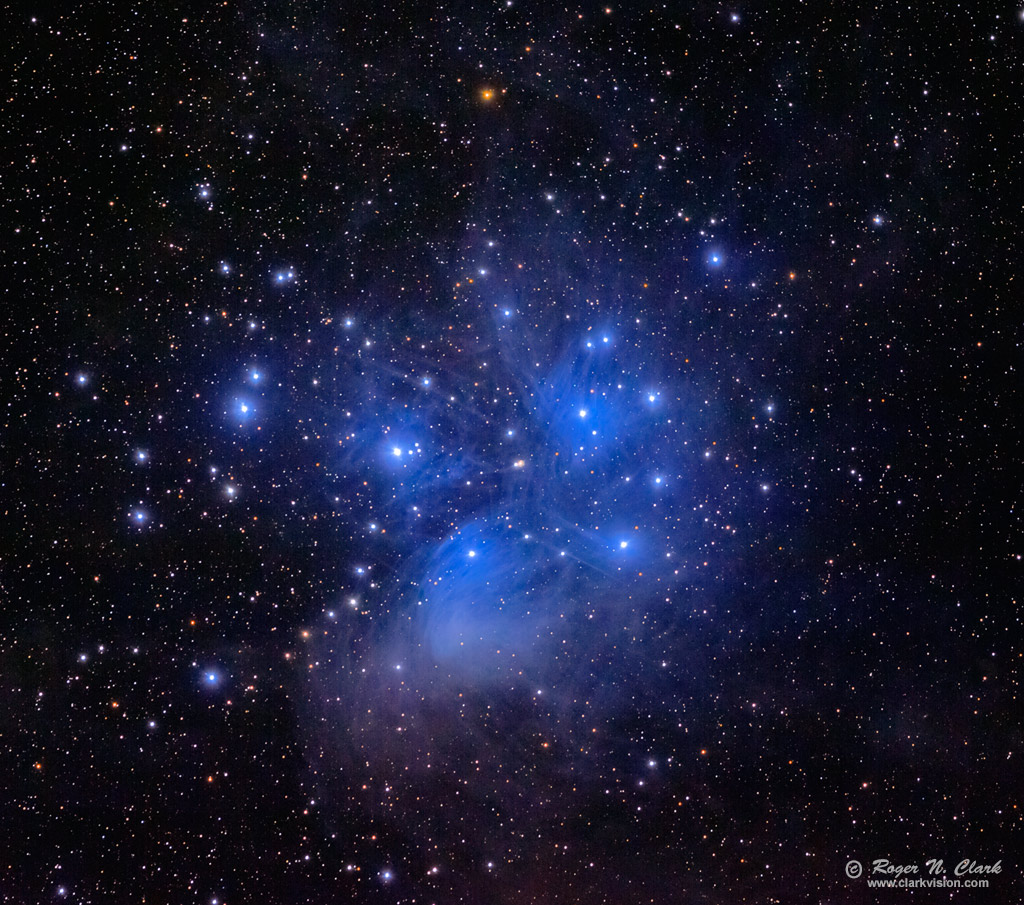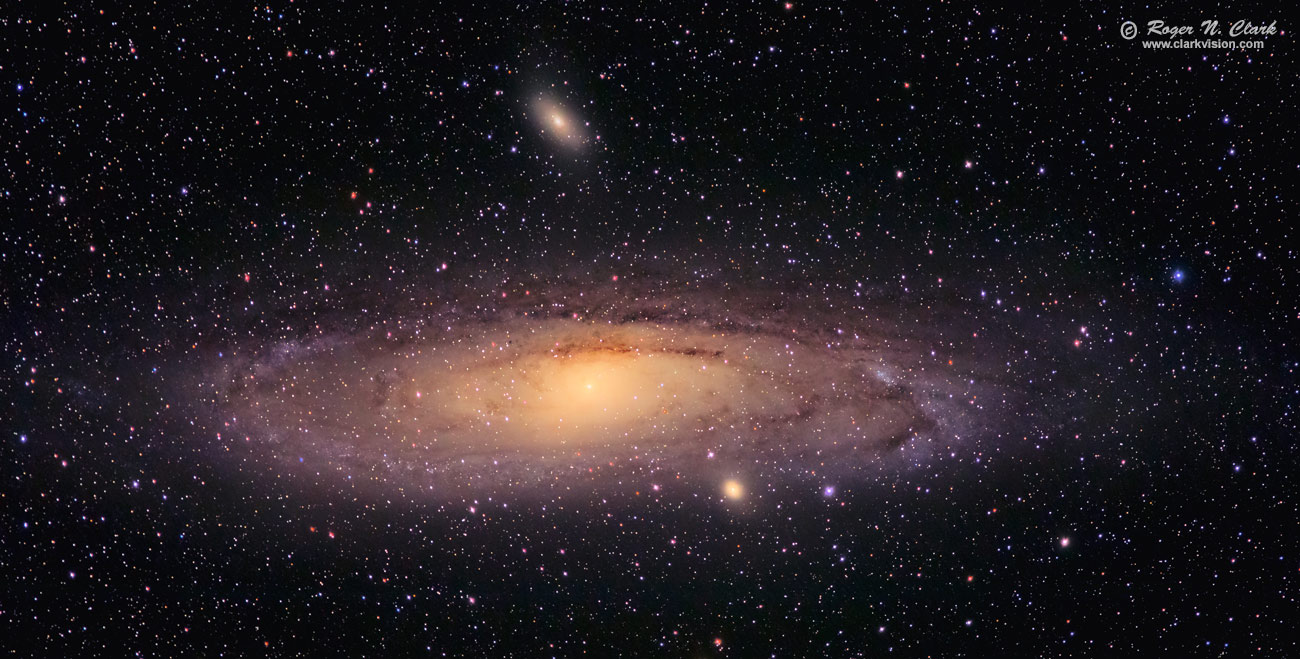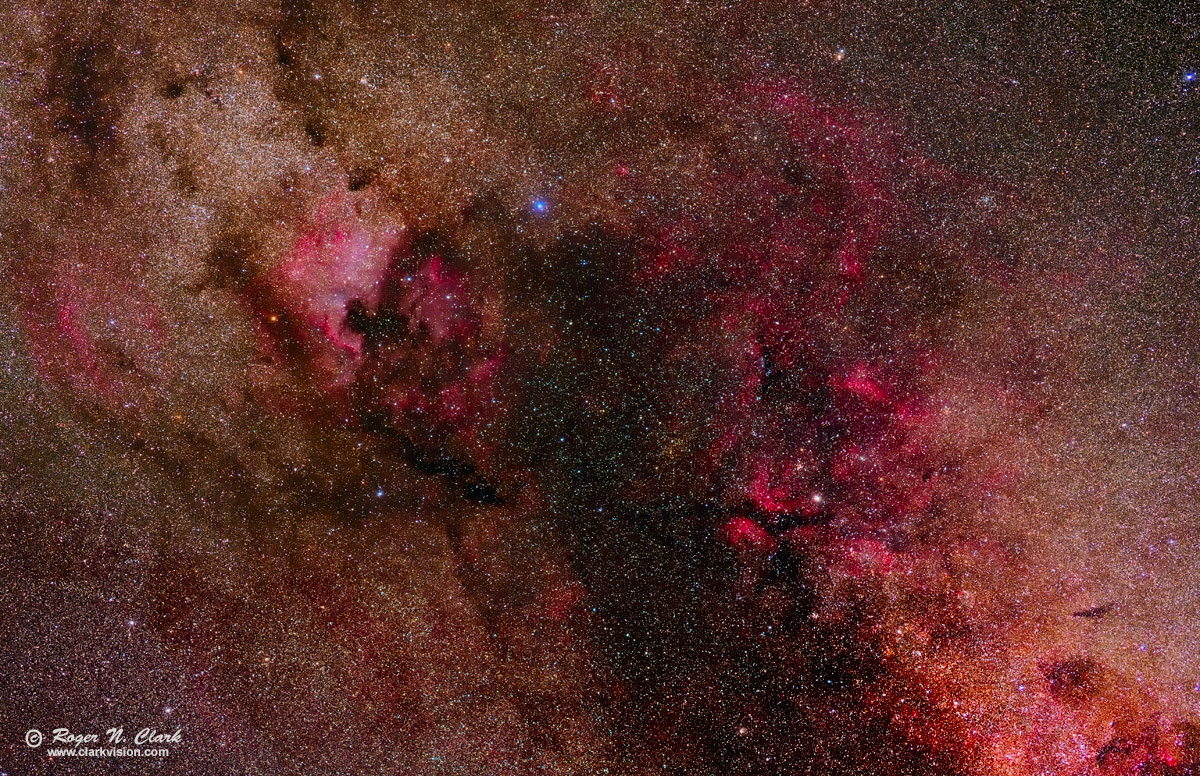ClarkVision.com
| Home | Galleries | Articles | Reviews | Best Gear | Science | New | About | Contact |
Do You Need a Modified Camera For Astrophotography?
by Roger N. Clark
| Home | Galleries | Articles | Reviews | Best Gear | Science | New | About | Contact |
by Roger N. Clark
Some astrophotographers say a stock digital camera is a poor choice for astrophotography because of reduced sensitivity to red hydrogen-alpha emission. They say you need a special modification or you can't detect the many emission nebulae in the night sky. Is this true? NO!
The Night Photography Series:
Contents
Introduction
Emission Nebulae
Filter Transmission and Hydrogen-Alpha Response
Conclusions
References and Further Reading
Most unmodified (stock) digital cameras have plenty of H-alpha response. The problem is that the amateur astronomical community seems to consistently use post processing methods that suppress H-alpha. Specifically, people seem to be doing a histogram equalization (auto white balance). Try the same processing work flow on a red sunset image and it will come out awful.
The stars in the Milky way galaxy are predominantly yellow and red. You wouldn't know that from all the amateur astro photos out there, as the histogram equalization turns yellow stars blue. It is because the average astro scene is predominantly yellow/orange/red that the histogram equalization steps are suppressing H-alpha response.
See my processing challenge in Astrophotography Image Processing with Light Pollution and try your methods (examine Figure 9 in that article). If you can't get at least as much H-alpha as I show on that page and in Figure 2 below, your methodology is the cause, not that unmodified cameras lack H-alpha response.
Critics of this article miss the point! The article has been criticized that I miss the point, saying that modifying a digital camera improves H-alpha sensitivity. I never said it didn't! My point that I demonstrate throughout the astrophotography series is that a stock digital cameras can pick up enough H-alpha emission to make beautiful images (there are some rare older camera exceptions that have very little H-alpha response). Sure modifying to improve red response will pick up more, and if that is your goal, fine. But it is not an absolute requirement to modify cameras to show plenty of H-alpha, and if you want to make natural color images, modifying a camera for enhanced red response messes up color balance. Modern digital cameras typically have about 25% transmission for H-alpha. Changing filters can increase that throughput about 2 to 3 times. But that increase boosts red response of continuum sources like stars only a few percent (depends on spectral response of the star), and because there is then an imbalance between different spectral sources (e.g. nebulae vs stars), there is no correction to regain accurate color balance if you want natural color for stars and nebulae. For more information, see Sensor Calibration and Color and Color Astrophotography and Critics.
Because the H-alpha line is very strong, and in a modified camera H-alpha line is so intense, the histogram equalization is just bringing the intensity of H-alpha back to a reasonable level.
Hydrogen emission is more than just H-alpha: it includes H-beta, H-gamma, and H-delta in the blue, blue-green, thus making pink/magenta. The H-beta H-gamma, nd H-delta lines are weaker than H-alpha but a stock camera is more sensitive in the blue-green, giving about equal signal. Modifying a camera increases H-alpha sensitivity by about 3x. But hydrogen emission with H-alpha + H-beta + H-gamma will be improved only about 1.5x.
But there is another factor. In a Bayer sensor color camera, 1/4 of the pixels are red, half are green and 1/4 are blue. H-beta will be recorded by both green and blue pixels, thus 3 times more signal.
The true color of hydrogen emission nebulae are pink/magenta due to 4 lines: H-beta, H-gamma, and H-delta in the blue and H-alpha in the red. Visually, the 4 give about the same intensity to the eye, resulting in pink/magenta, which can be seen visually in bright emission nebula in large telescopes (e.g. 8 to 10-inch aperture), like the Orion nebula, M8 the Lagoon, M20 the Trifid, and others. Stock cameras show the astrophysics that is going on. See The Color of Nebulae and Interstellar Dust in the Night Sky There is also an advantage in not modifying and processing for natural color: more color diversity, color that better indicates compositional differences and more astrophysics in the images.
Often some oxygen and emission lines from other elements contribute teal (bluish-green) in the cores of some hydrogen emission nebulae. The true color of hydrogen emission nebulae is more like pink to magenta, depending on the abundance and reddening by dust, not the blood red we see from H-alpha modified cameras. An unmodified camera shows these colors and their varying intensities better so you can discern chemical processes. Tables 1 and 2 show some of the colors in the deep sky.
Table 1
Table 2. Emission Lines in Nebulae in the Visible Spectral Range
The relative abundances of gases and their temperatures determine the observed strengths of the emission lines. Dust preferentially absorbs blue, so the dust abundance creates reddening so the abundance of dust further changes the relative intensities, and therefore the colors recorded by a camera.
With a modified camera, the H-alpha line usually dominates in hydrogen-containing nebulae so that the relative abundances of other gases and effects of dust are swamped by the strong red H-alpha emission, making many/most hydrogen containing nebula mostly just red. Then one can't see the multitude of colors and thus there is loss of compositional information beyond the existence of hydrogen in the nebula.
The following figures (1-10) illustrate the diversity in color and composition that can be recorded by a stock DSLR. The examples are all made without histogram equalization that squashes reds. The key to bringing out the varying colors, including red H-alpha, is post processing. The dominant reason astrophotographers can't bring out the H-alpha is due to post processing methods that suppress reds. See parts 2 and 3 of the series for more details on processing.










Not all stock cameras have good hydrogen-alpha response. Sometimes the IR blocking filter cuts off at too short a wavelength, blocking hydrogen-alpha (656 nm) light. So before choosing a stock camera, see if you can find online the spectral response, especially of the IR filter. Here is one web site that shows the IR filter transmission of many digital cameras: Kolari Vision Internal Cut Filter Transmission . For example, look at the Nikon D90, which has just a few percent transmission at 656 nm, versus the D80 with over 20% transmission. Or compare the Canon 20D (over 30% transmission at 656 nm) versus a Canon T2i (only a couple of percent transmission at 656 nm). For astrophotography, transmission at the hydrogen-alpha line should be above about 20%.
More IR-blocking filter transmission spectra are shown in these articles at petapixel.com and at noctilove.co.uk
Modifying digital cameras is not necessary to obtain great astrophotos. Many stock cameras have good hydrogen-alpha response, e.g. recent Canon DSLRs. More important than a modified cameras is proper post processing methods that will bring out and not suppress hydrogen alpha emission, and cameras with good sensitivity and very low thermal dark current. The best digital camera for deep sky astrophotography that I have evaluated has good sensitivity, including hydrogen-alpha, and amazingly low dark current is the Canon 7D Mark II 20-megapixel digital camera and the more recent Canon EOS 90D DSLR Camera. A great full frame digital camera for astrophotography is the Canon EOS 6D Mark II DSLR Camera, but even better is the Canon EOS R5 Mirrorless Digital Camera.
The advantage of a stock digital camera in astrophotography is that the color balance is close to that of the human eye, and shows compositional differences better. Modified digital cameras are too sensitive to hydrogen alpha emission, making scenes containing hydrogen too red, swamping colors from other compositions. Often this shows in amateur astrophotos as dominantly red. The choice of course is personal. I prefer images with more colors to show more processes and chemistry. I believe such images are more interesting, so I only use stock digital cameras for my astrophotography.
References and Further Reading
Clarkvision.com Astrophoto Gallery.
Clarkvision.com Nightscapes Gallery.
The Night Photography Series:
| Home | Galleries | Articles | Reviews | Best Gear | Science | New | About | Contact |
http://clarkvision.com/articles/astrophotography.image.processing
First Published July 30, 2015
Last updated May 21, 2025